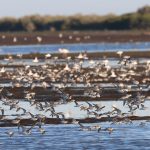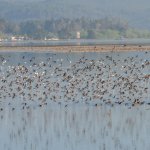Salt Plains National Wildlife Refuge (NWR), in north central Oklahoma, joined the Western Hemisphere Shorebird Reserve Network (WHSRN) in February of 1994. Surveys conducted by Dr. Susan Skagen showed the importance of the site’s salt flats and wetlands to shorebirds during spring and fall migration, supporting the designation of Salt Plains NWR as one of the first four WHSRN Site of Regional Importance in North America.
Now, twenty-five years later, Salt Plains’ WHSRN status has been upgraded to a Site of International Importance, due to improved understanding of the Refuge’s significance to the breeding population of North American Snowy Plovers (Charadrius nivosus). The 32,197 acres (13,030 hectares) of Salt Plains NWR encompasses the majority of an approximately 13,000 acre (5,261 hectare) salt flat, one that sprawls eight miles (13 km) north to south and four miles (6 km) east to west. The eastern portion of the salt flats adjoins the man-made reservoir Great Salt Plains Lake. The lake shore provides about five and a half miles (9 km) of open shoreline, which attracts up to 38 species of shorebirds and a multitude of ducks and geese, and flocks of Sandhill and Whooping Cranes.
Shorebird numbers peak at Salt Plains during spring migration in late April and early May. Dominant species in spring include Snowy Plover, Spotted Sandpiper (Actitus macularius), Baird’s Sandpiper (Calidris bairdii), Semipalmated Sandpiper (Calidris pusilla), Western Sandpiper (Calidris mauri), and White-rumped Sandpiper (Calidris fuscicollis). Fall migration peaks around September and is dominated by Greater Yellowlegs (Tringa melanoleuca), Willet (Tringa semipalmata), Sanderling (Calidris alba), Least Sandpiper (Calidris minutilla), Snowy Plover, Spotted Sandpiper, Baird’s Sandpiper, and Stilt Sandpiper (Calidris himantopus).
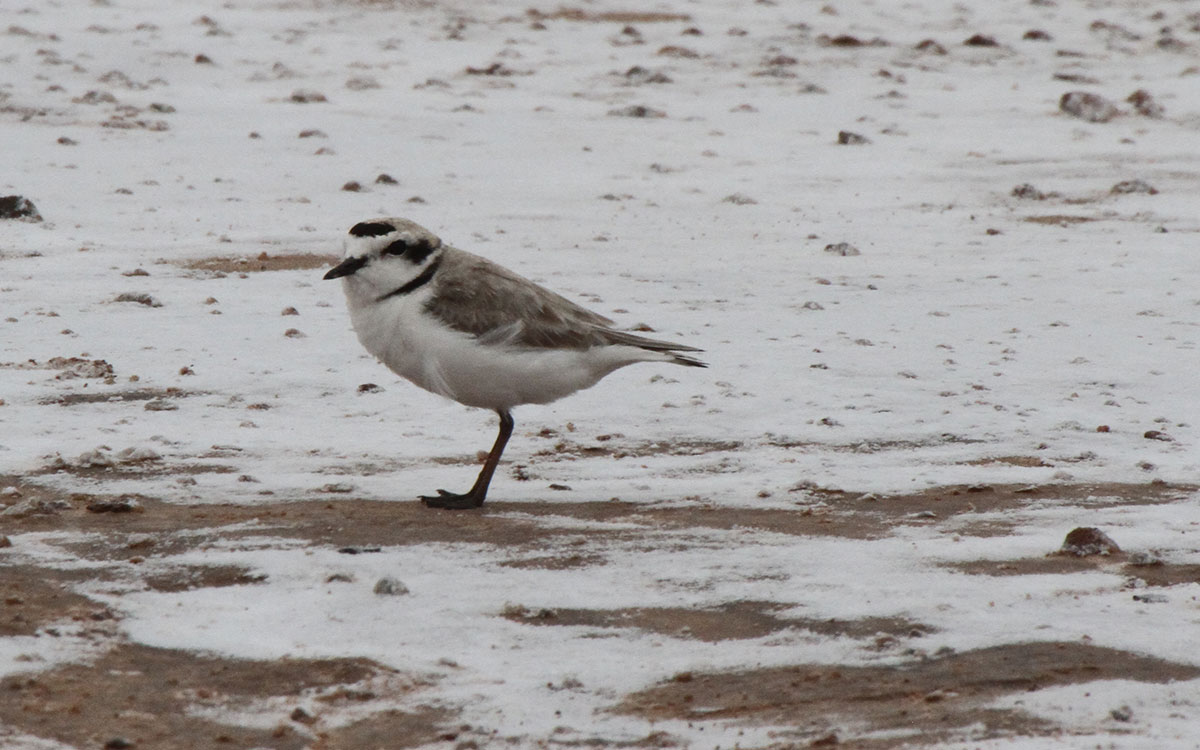
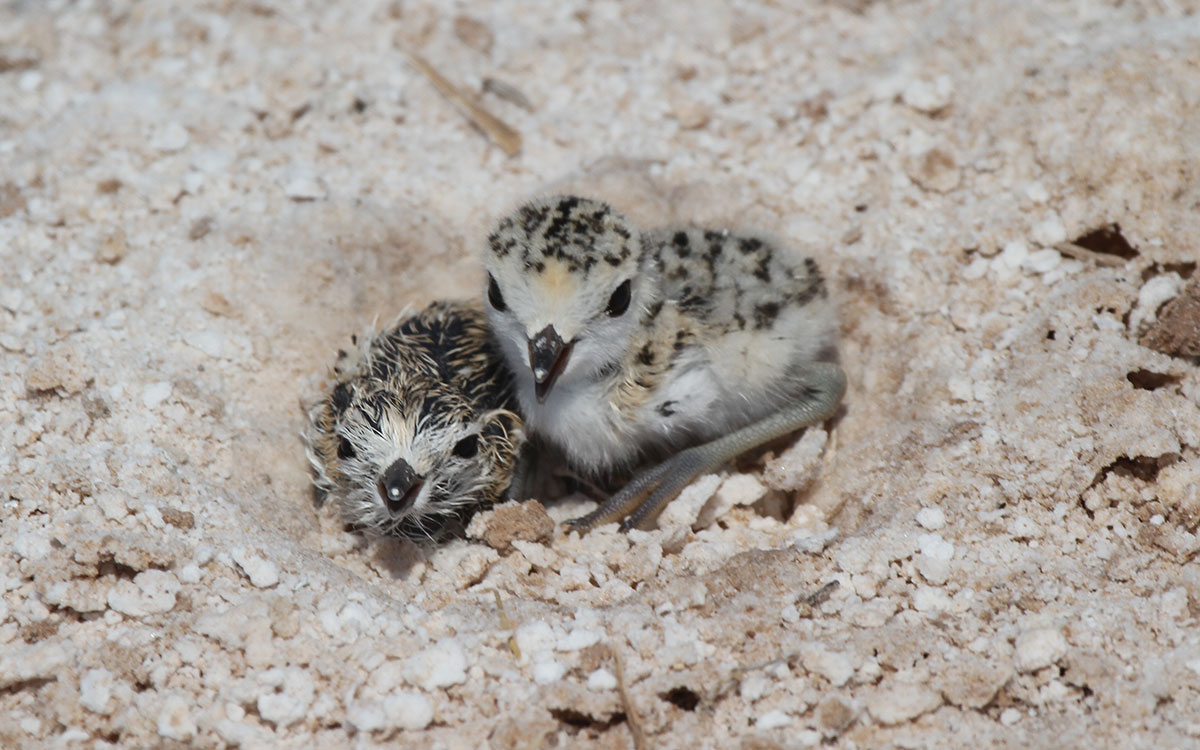
Adult Snowy Plover (left) and Snowy Plover nestlings (right) at Salt Plains National Wildlife Refuge. Photos: Glen Hensley.
In 2012, Susan M. Thomas et al. published “Population Size of Snowy Plovers Breeding in North America” in the journal Waterbirds, and identified Salt Plains NWR as one of the most important breeding areas for Snowy Plovers, estimating that the Refuge contained about 22% of the continental breeding population. These results were based on a nationwide survey effort of known breeding locations in 2007 and 2008. From 2013 through 2017, these spatial surveys were replicated at the salt flats, resulting in population estimates similar to those published in 2012. An average of more than 4,500 Snowy Plovers was consistently estimated at Salt Plains NWR during the breeding season, an abundance that represents 20.4% of the Interior/Gulf Coast population and 18.1% of the entire North American population.
The annual survey effort was a massive undertaking, only possible with help from many partners. With a need for at least 20 surveyors, volunteers participated from the Division of Ecological Services, Division of Migratory Birds, Inventory and Monitoring Program, Regional Office, Refuge staff from Texas, New Mexico, and Kansas, Natural Resource Conservation Service, and University professors and students.
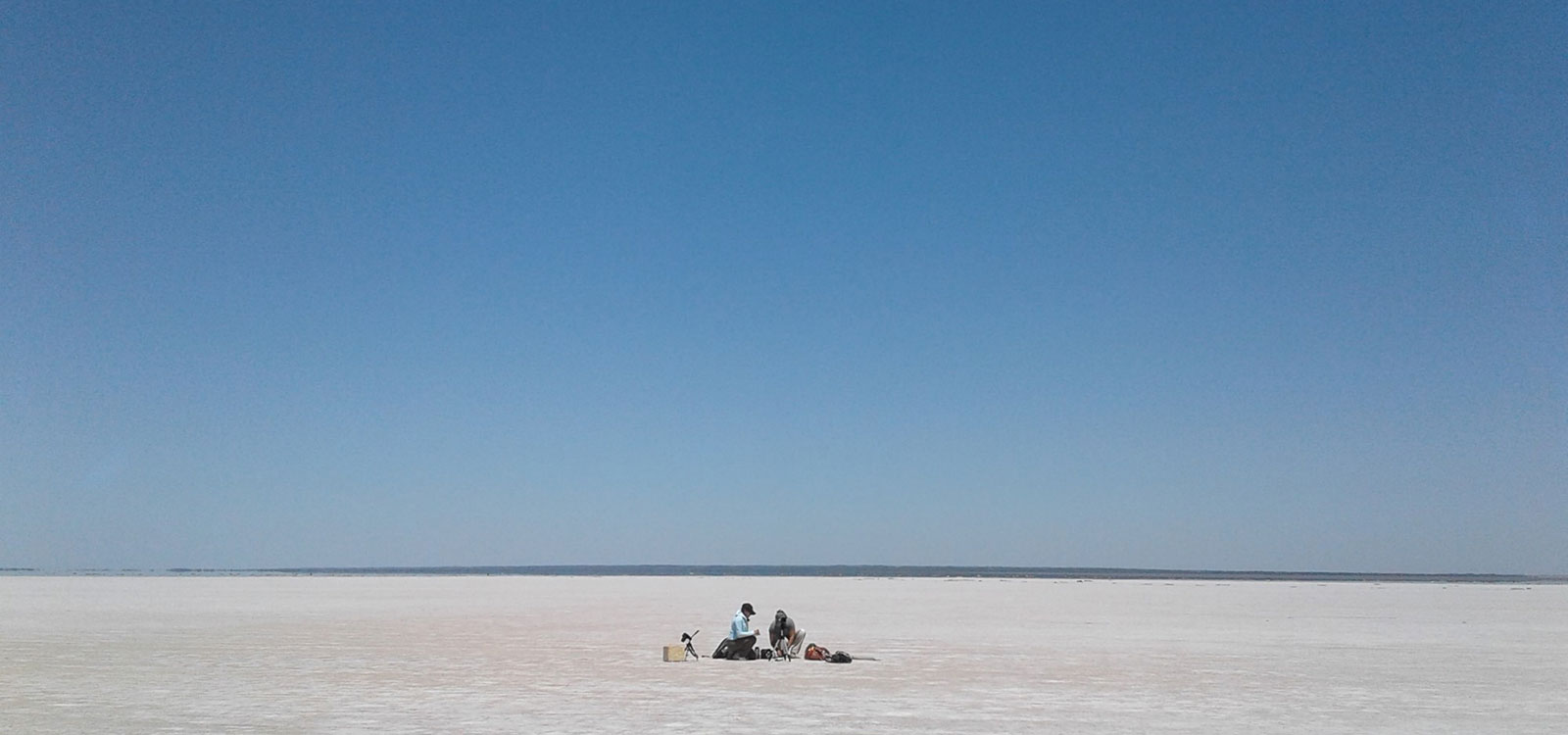
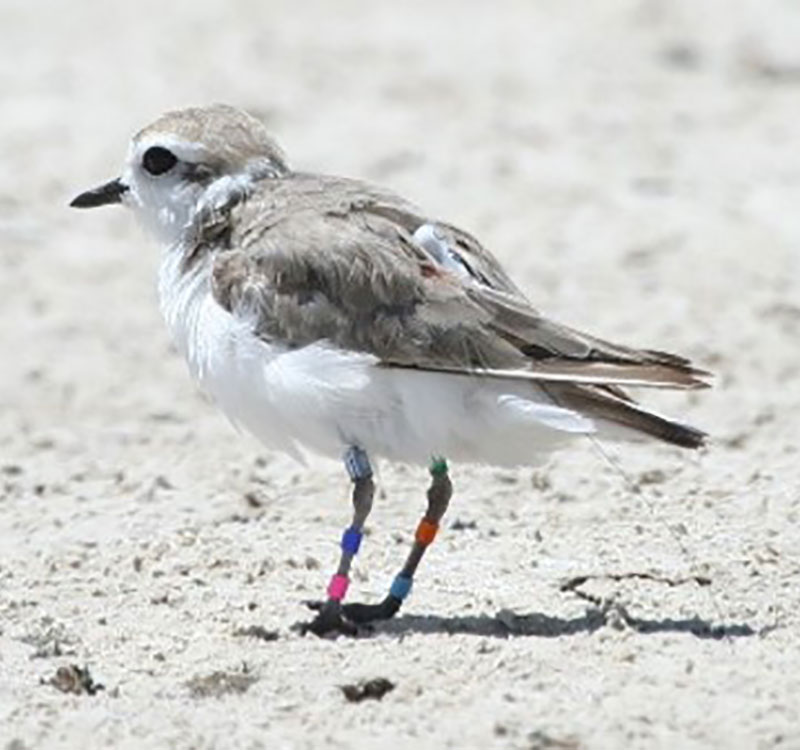
Research team on the salt flats (left) and tagged and banded Snowy Plover (right). Photos: Kristen Heath, Texas Tech University.
Moving forward, studies are underway by Dr. Warren Conway at Texas Tech University to further understand Snowy Plover breeding populations at Salt Plains NWR and within the Southern Great Plains region of the United States. Studies include potential threats to breeding populations, connectivity of breeding populations within the Southern Great Plains, and response of Snowy Plovers to efforts to restore breeding habitat by removing invasive saltcedar (or Tamarisk Tamarix sp.).
Management actions are also starting this year to restore approximately 2,000 acres of salt flats that were lost to saltcedar invasion. The Refuge hopes that removing saltcedar will provide additional breeding habitat for Snowy Plovers, as well as for Least Terns (Sternula antillarum) and American Avocets (Recurvirostra americana). The removal of saltcedar will also reduce predator cover, increasing nest success within adjacent breeding sites.
Please join the WHSRN Executive Office in congratulating Salt Plains NWR – for celebrating their 25th anniversary as a WHSRN site and upgrading in status to a Site of International Importance!
Cover Photo: Snowy Plover foraging at Salt Plains National Wildlife Refuge. Photo: Glen Hensley.





